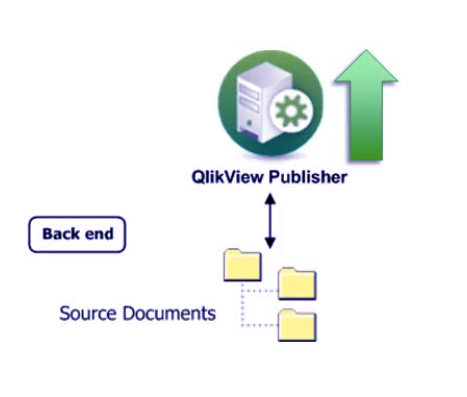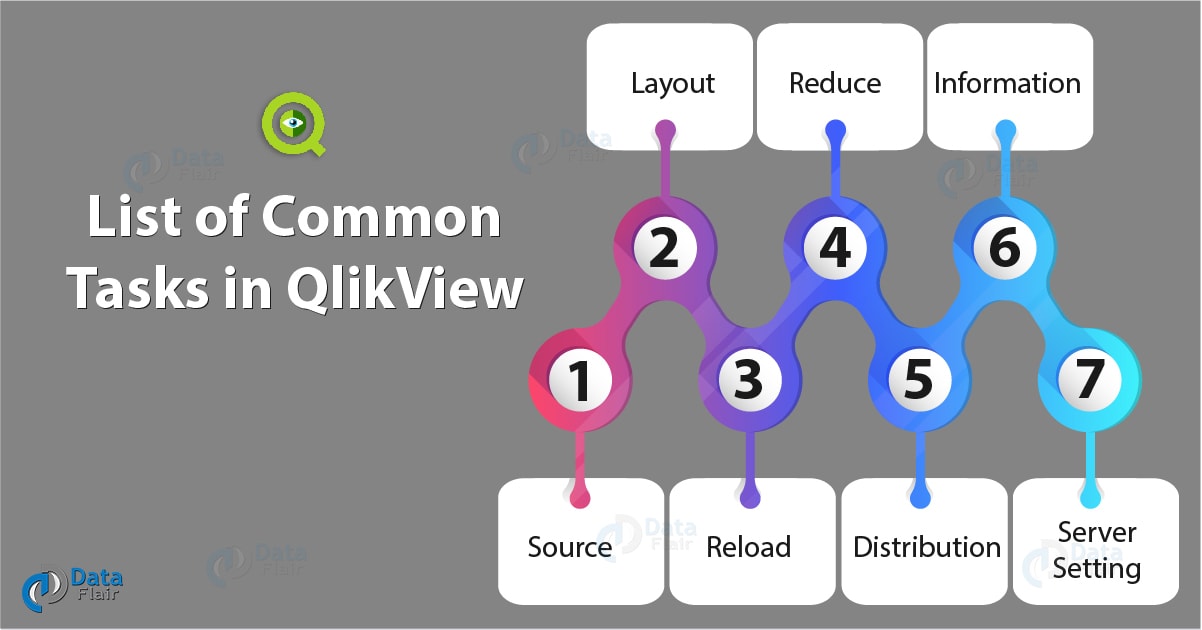QlikView Tasks – QlikView Data & Types of QlikView Documents
FREE Online Courses: Knowledge Awaits – Click for Free Access!
After studying QlikView SNMP, here we came up with a new tutorial, QlikView Tasks. In which we study what are Qlikview Data and QlikView documents. Moreover, we will discuss how to connect QlikView data sources, types of Qlikview documents, and some general Qlikview Tasks.
So, let’s start QlikView Tasks, Data, and Documents.
QlikView Documents
A QlikView Document is the collection of sheets or may also have only one sheet. These sheets comprise several different sheet objects that represent data for analysis.
There are two types of QlikView documents folders are present. These are Source Documents folder and User Documents folder. Both the QlikView documents are very crucial.
Do you know how to create QlikView Table (Cross, Straight, Pivot & Mapping Table)?
At the backend, as we learn in the tutorial ‘QlikView Architecture’ that QlikView Developer creates documents having scripts which fetch by the QlikView Publisher which processes the script to find the connection string to connect the document with the correct data source.
These QlikView documents containing scripts are known as Source Documents (.qvw files). Once the QlikView Publisher fetches the source files from the folder in the QlikView Developer, it reads the instructions or directions given in the script and extracts data from the data sources like Excel, data warehouse, SAP, Oracle etc., accordingly.
Then a new .qvw file is made which contains the data request by the user. QlikView Publisher reduces and distributes these new .qvw files to appropriate QlikView Server which is further made available as a User Document on the Access Point for the users/clients.
This journey of a QlikView Documents or file from a source document to a user document might have some intermediate forms like a QVD file. But any file ultimately reaches the user as the QVW user document. Also, the QVW files are not visible/accessible to the user while they are in the source document folder.
But as soon as they transform and sent to the user document folder, the QVW files can access by the user from the QlikView Access Point.
Follow this link to know about QlikView Vs Tableau
Types of Documents in QlikView
Follow are the two types of QlikView Documents:
a. Source Documents in QlikView
The source documents are basically a script containing document which may have either, the script to extract data from data source, a binary data in QVD file or binary data load from another QVW file having the data model in one code line.
The source documents are created by/in the QlikView Developer and the location of the folder on your system is (for windows server 8 and later),
\ProgramData\QlikTech\SourceDocuments
The access of the source documents id handled by NTFS. Also, source documents can also create by QlikView Distribution Service for the distribution process.
b. User Documents in QlikView
The User Documents, as the name suggests, are used by users and are provided by/accessed on the QlikView Server. A QlikView User Document consists of three parts/files i.e. a .qvw file, a .META file and a shared file.
The .qvw file has all the data and layout information. The .META file has pre-load options, Access Point information and authorization details. And lastly the shared files have all the objects like Bookmarks, Reports, Sheet Objects etc., which can share with other clients through QVS.
The location of QlikView User Documents folder is,
\ProgramData\QlikTech\Documents
For the versions of Windows Server 8 and later.
QlikView Data
QlikView Source Data is the data that is extracted from external data sources into the QVW file. There are many kinds of data sources available to load from, in QlikView. Also, the data can load through different QlikView services like QlikView Distribution Service, Reload Engine or it can do manually, through a developer.
A list of the type of files from which you can extract data into a QlikView (QVW) file is given below.
- Databases
- Text Files, also known as Flat files (CSV, TSV etc.,)
- XML
- Webpages (HTML)
- Log Files
- Excel
- Inline Data
- QVD
- QVX
- QlikView (QVW)
- Datawarehouse (Informatica)
- SAP
- Salesforce
- IBM DB2
- Teradata
Also, read – QlikView IntervalMatch and Match Function
There is plethora of enterprises worldwide, small-scale and large-scale, from which data can extract for business analysis in QlikView. In the pictures given below are the names of the data sources used by QlikView Clients. As you can see, there is a wide range of companies or applications covered, in terms of sectors.
You get to fetch data from varied sources like social media platforms Facebook, Twitter etc., IT companies like Microsoft, IBM etc.
a. How to Connect to QlikView Data Source?
QlikView provides easy methods of connection to different sorts of QlikView data sources like Excel files, XML files, Inline data, Delimited files, ODBC etc. To connect to an Open Database Connection (ODBC) data source, the steps to follow,
- Open the Script Editor by using the icon or pressing CTRL+E keys.
- Once the Script Editor opens, click on CONNECT at the left bottom pane in DATA section. ODBC is selected as the data source by default.
- A new dialogue box will open, from here you can select the data sources (DSN). Check the ‘Show User DSNs’ column so that all the data sources are shown in the list.
Let’s explore How to Create QlikView List & Multi Box
- You can also enter the Username and Password of the DSN for security purposes.
- To test whether the connection authorize and viable, click on ‘Test Connection’ given at the bottom.
QlikView Tasks
QlikView Tasks define as the operations perform on data during transformation. Transformation is making changes in the data extracted from the source (Source Document) to create the final user document. are many tasks which can perform to transform the source data. The user can also execute combinative tasks on a dataset.
A List of Common Tasks in QlikView
Let us take a look at some common QlikView tasks.
i. Source
The source task in QlikView makes sure that the data sources available to make changes/get to transform.
ii. Layout
The layout, QlikView task is responsible to keep the layout settings and configurations unchanged. They transfer as it is to the user documents.
iii. Reload
Reloading task decides how the data from the source is going reload for a user document to made. Reloading can be of different types. No reload i.e. the data not reload at all but just stores in the user document. Partly reload, where only some parts of data reload. This is done by setting relevant script expressions that allow data reloading in parts. And the third way is to fully reload data from the source which deletes any old data entirely.
Must Read – Difference Between QlikView Vs Power BI
iv. Reduce
The next step in data transformation is Reduction. A data document, reduced into many simpler/smaller data documents. It can perform in two ways. First is Simple Reduce, where data reduce into simple documents. The second way is a loop and reduce, where source data set is split into smaller documents. Data can reduce by QlikView Management Console or by Bookmarks.
v. Distribution
The Distribution is sending the transformed (reloaded and reduced) data document to the user/client. Distribution can also be of two types, simple distribute where the same document is distributed to all the clients and loop & distribute when different data is needed to be distributed to different users.
vi. Information
This task is responsible for containing all the important document information related to distribution to a server. There are three types of information that can associate with the document during distribution, they are, Description, Category and Arbitrary name-value pairs.
vii. Server Settings
One task assigns for the server settings, by which the user can set authorization preferences, access Point services, Performances and availability.
So, this was all about QlikView Tasks, Data, and Documents. Hope you like our explanation.
Conclusion
Hence, we learned all three (QlikView Tasks, Data, and Documents) terms play a central role in the operations of QlikView. In addition, we studied the QlikView documents and their types, moving on to the concept of QlikView source data and how it connects with the document.
Then we studied all the important QlikView tasks that use for transform the source data into final/front-end user data. Hope the explanation was helpful. Let us know in the comment section below.
Related Topic – QlikView Backus Naur Form
If you are Happy with DataFlair, do not forget to make us happy with your positive feedback on Google










